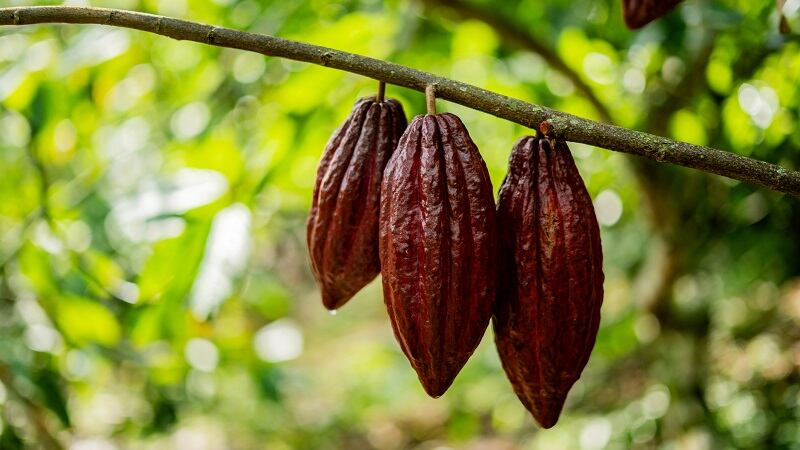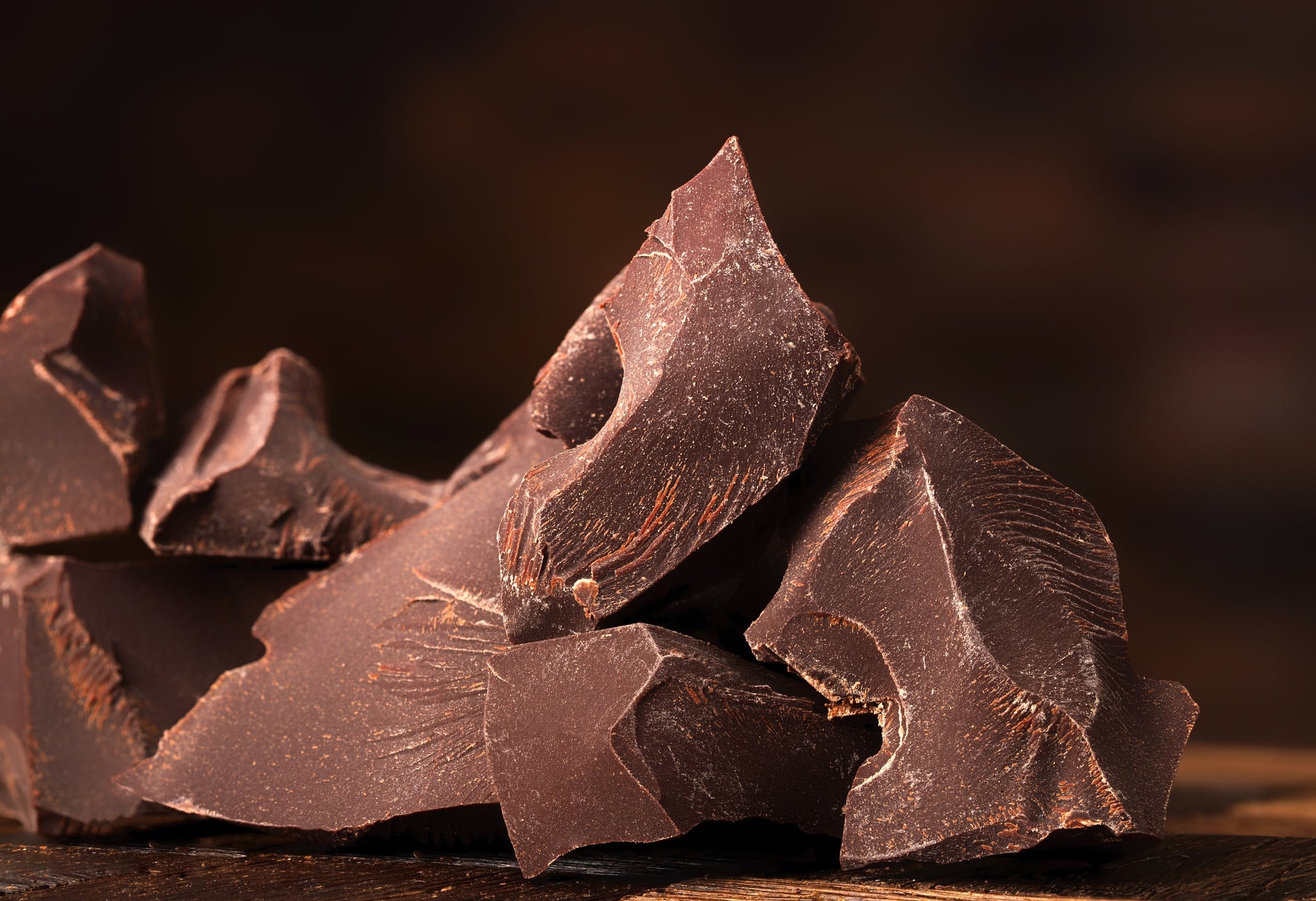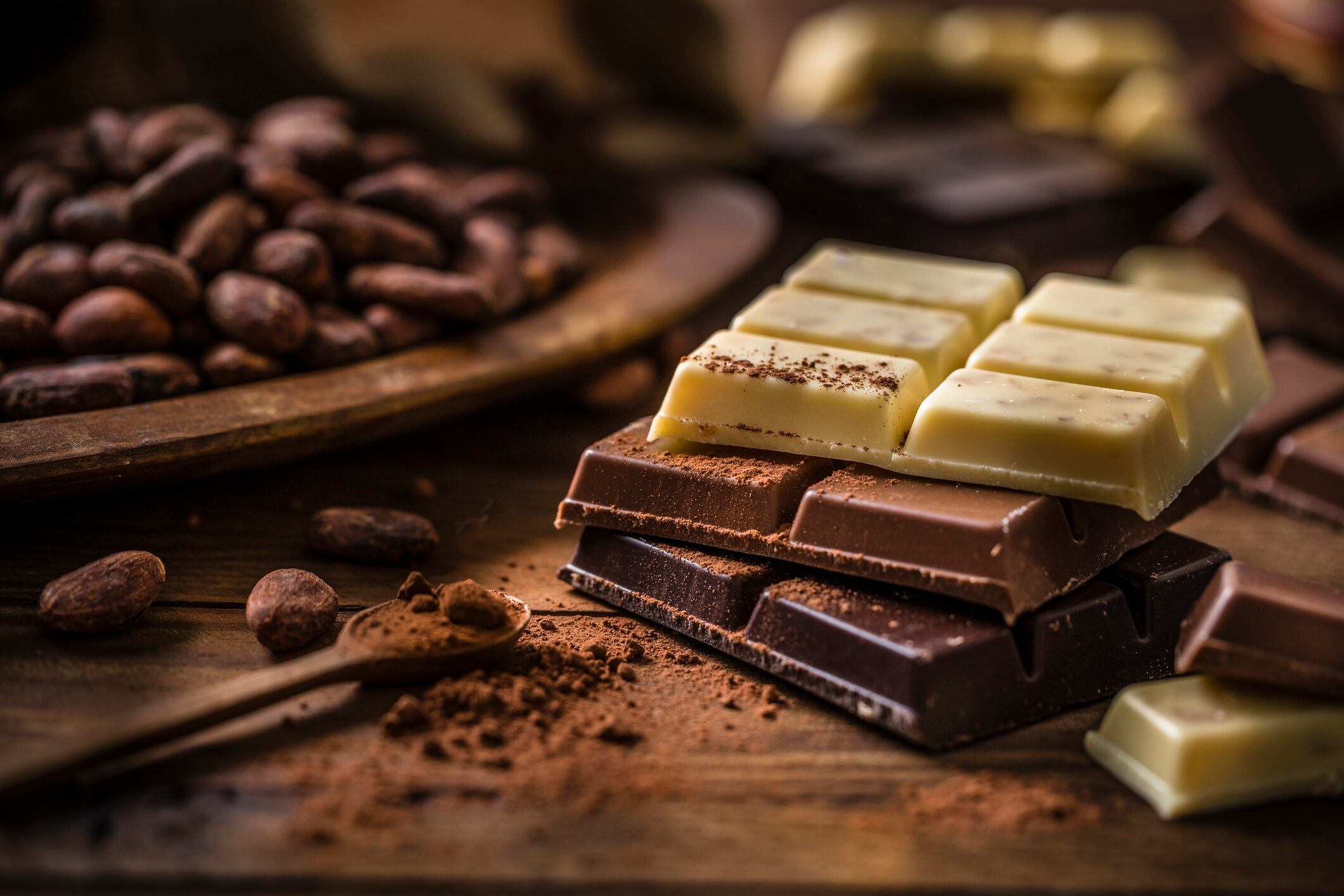Has the cocoa crisis changed chocolate forever? Summary
- Cocoa prices have surged due to extreme weather, disease and supply chain strain
- Major brands are investing billions in lab-grown cocoa and fermentation alternatives
- Legal definitions are forcing reformulated products to drop the word chocolate
- Climate change is driving geographic shifts and demand for resilient cocoa crops
- Consumer acceptance of cocoa-free chocolate hinges on taste and sustainability
The cocoa industry has reached crisis point.
Extreme weather and disease continues to wreak havoc on crops across the world’s key growing regions, while geopolitical tensions are placing strain on global supply chains.
This has led to a massive spike in cocoa prices worldwide. And while the market is showing signs of stabilising, costs remain eye-wateringly high.
As a result, we’ve seen a huge industry shift away from traditional cocoa over the past twelve months,
- Lindt & Sprüngli is investing in lab-grown cocoa, in collaboration with Swiss start-up Food Brewer
- Mars is hoping gene editing tool CRISPR will help futureproof its cocoa supply, through the creation of more resilient crops
- Cargill has launched NextCoa, a cocoa-free ingredient range designed for confectionery, bakery, ice cream, and snack products
- Mondelēz International is developing cell-cultured chocolate-grade cocoa butter with ingredient supplier Celleste Bio.
- Barry Callebaut has announced plans to explore cocoa alternatives in collaboration with German start-up Planet A Foods. This follows an earlier announcement that it’s exploring the potential for cultivated cocoa.
And that trend looks set to continue as manufacturers pump literal billions into research and development of cocoa alternatives.
So, all this begs the question, has the cocoa crisis changed chocolate forever?

The term chocolate
As cocoa content in many products continues to decline due to rising costs and supply shortages, some brands are facing a regulatory and marketing challenge - losing the right to label their products as ‘chocolate’.
In many markets, legal definitions require a minimum percentage of cocoa solids for a product to qualify as chocolate, and reformulations using alternative ingredients, like palm oil or cocoa-free substitutes, risk falling below that threshold.
Nestlé and Pladis have been forced to drop the word chocolate from their white chocolate KitKats and Digestives, after cocoa butter levels dipped below the UK’s legal minimum of 20%. Meanwhile McVitie’s has had to remove it from their Penguin and Club milk-chocolate biscuit bars, after it altered the ingredients to include more palm and shea oil in place of cocoa.
This shift could force brands to rethink packaging and positioning, potentially replacing the word chocolate with terms like ‘chocolate-flavoured’ or ‘confectionery’.
Beyond compliance, this change raises questions about consumer trust and perception - will shoppers accept these new labels, or view them as a downgrade in quality?
For manufacturers, the challenge lies in maintaining indulgence and authenticity while navigating stricter labelling standards and evolving consumer expectations.

Cocoa alternatives
The future of chocolate may not rely on cocoa at all, as innovators turn to fermentation-based alternatives to address the looming cocoa crisis.
Start-ups like Win-Win and Planet A Foods are leveraging precision fermentation to recreate the complex flavour compounds found in cocoa, producing chocolate-like products without traditional beans. These technologies promise a more sustainable and climate-resilient solution, reducing dependence on vulnerable cocoa-growing regions.
However, consumer acceptance remains a critical hurdle. Will people embrace lab-grown chocolate as a legitimate indulgence, or perceive it as too artificial? Early market signals suggest curiosity and cautious optimism, but widespread adoption will depend on taste, price, and the ability of brands to tell a compelling sustainability story.

Tech innovations
Technological innovations are emerging as a potential lifeline for the cocoa industry, offering solutions to counter declining yields and climate-related challenges.
AI and data-driven farming techniques are enabling growers to monitor soil health, predict disease outbreaks, and optimise harvesting schedules, potentially boosting productivity and sustainability.
Meanwhile, vertical farming and controlled environments present a radical shift, allowing cocoa to be cultivated in non-traditional regions under precise conditions, reducing reliance on vulnerable tropical zones.
And genetic engineering adds another layer of possibility, with scientists exploring disease-resistant and climate-resilient cocoa varieties, though this raises ethical questions around GMOs and consumer acceptance.
Together, these technologies could redefine cocoa production, but their success hinges on balancing innovation with transparency and trust.

Climate change & cocoa
Climate change is already reshaping the global cocoa map, with rising temperatures and increasingly erratic rainfall threatening traditional growing regions in West Africa, which currently supplies the majority of the world’s cocoa.
As conditions become less favourable, experts predict a geographic shift in cocoa farming, with new regions, such as parts of Latin America or Southeast Asia, potentially emerging as viable alternatives.
At the same time, researchers and industry players are racing to develop climate-resilient cocoa varieties that can withstand heat stress, drought, and disease, ensuring long-term supply stability.
These innovations could help safeguard the future of chocolate, but they also raise questions about biodiversity, farmer adaptation, and the economic impact on communities that have relied on cocoa for generations.

Health & Nutrition Trends
As cocoa supplies become increasingly uncertain, the crisis could accelerate a shift towards healthier chocolate alternatives that rely less on traditional cocoa.
Brands are already exploring functional chocolate formulations that incorporate added protein, vitamins, minerals, and adaptogens - ingredients that promise not only indulgence but also wellness benefits.
These innovations aim to appeal to health-conscious consumers while offsetting the reduced availability of cocoa, creating products that deliver both flavour and functionality.
However, the challenge lies in maintaining the sensory experience that chocolate lovers expect, ensuring that these alternatives feel like an upgrade rather than a compromise.

Consumer behaviour
Chocolate has long been woven into cultural traditions and celebrations, from birthdays and weddings to holidays like Christmas, Easter and Valentine’s Day. But as cocoa scarcity looms, its role in these rituals may undergo a profound transformation.
If chocolate becomes a luxury item, will consumers adapt by embracing a new style of chocolate - made with cocoa-free alternatives - or resist what they perceive as an artificial substitute?
This shift could redefine indulgence, with brands tasked to balance nostalgia and innovation, ensuring that new formulations still evoke the emotional connection people have with chocolate.

The future of chocolate
The cocoa crisis is more than a supply chain challenge, it’s a turning point for the entire chocolate industry.
From lab-grown cocoa and precision fermentation to AI-driven farming and climate-resilient crops, innovation is reshaping what chocolate means and how it’s made.
But as brands navigate regulatory hurdles, consumer skepticism, and the delicate balance between indulgence and sustainability, it’s clear that the chocolate of tomorrow will look and taste different to the chocolate of today.
Whether this evolution is seen as progress or compromise will depend on how successfully manufacturers can preserve the magic of chocolate while embracing a future that may no longer rely on cocoa.
The question isn’t just ‘has the cocoa crisis changed chocolate forever?’ It’s ‘is the industry ready for what comes next?’





